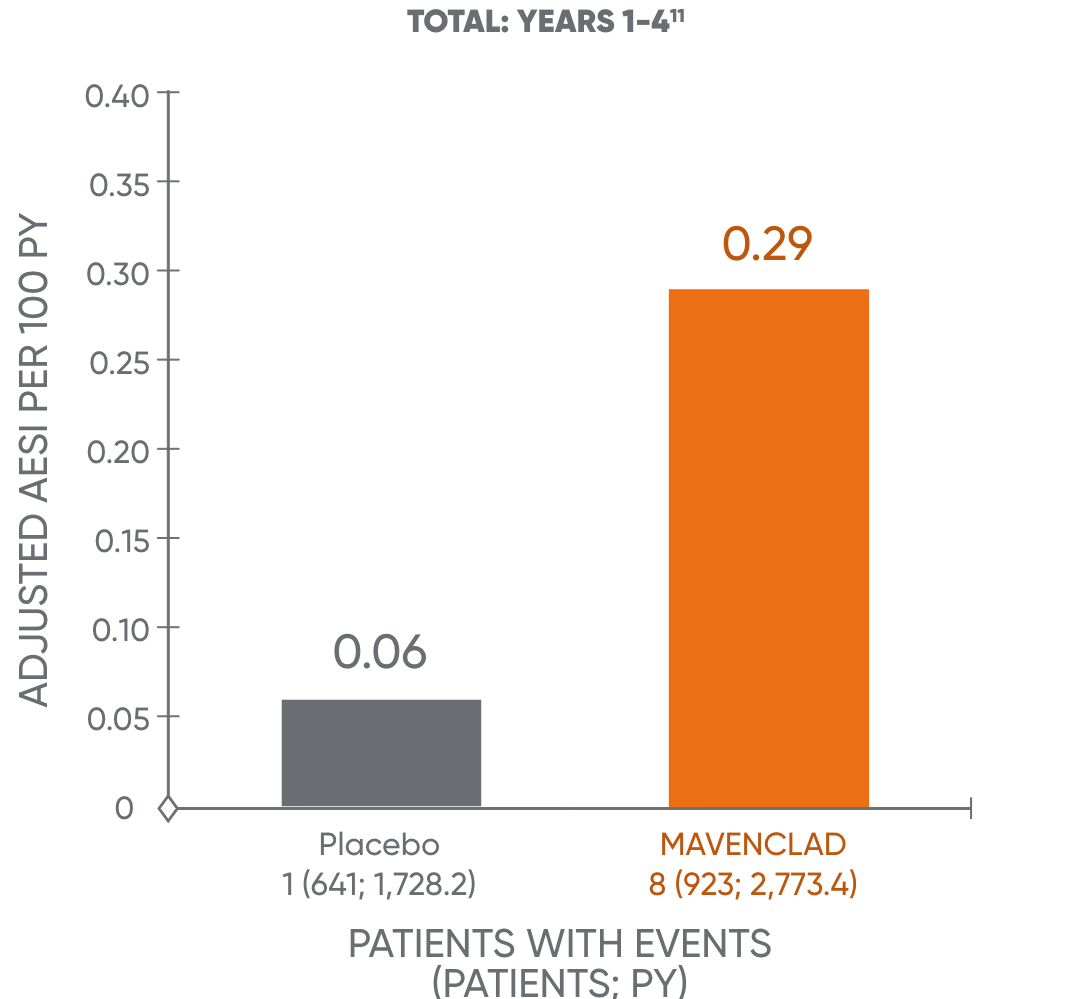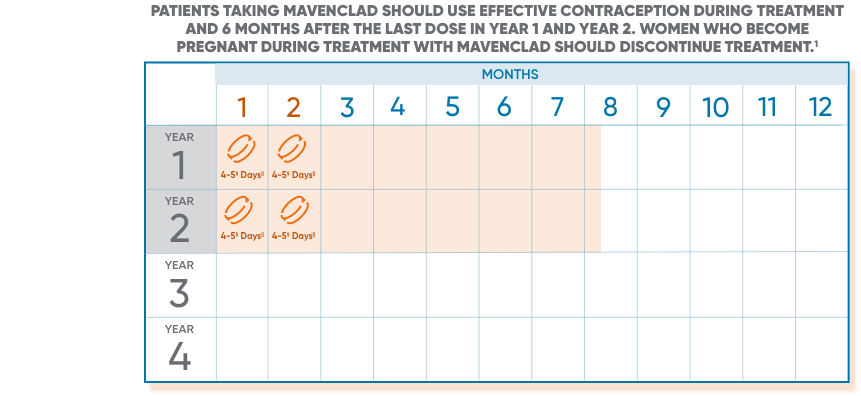Malignancy rates were higher in US clinical study patients than the rest of the world (4 events in 189 patient-years [2.21 events per 100 patient-years], compared to 0 events in US placebo patients). However, the US results were based on a limited amount of patient data.1
SAFETY & TOLERABILITY
Well-characterized Safety and Tolerability Profile
The safety and tolerability of MAVENCLAD were studied in CLARITY.1










